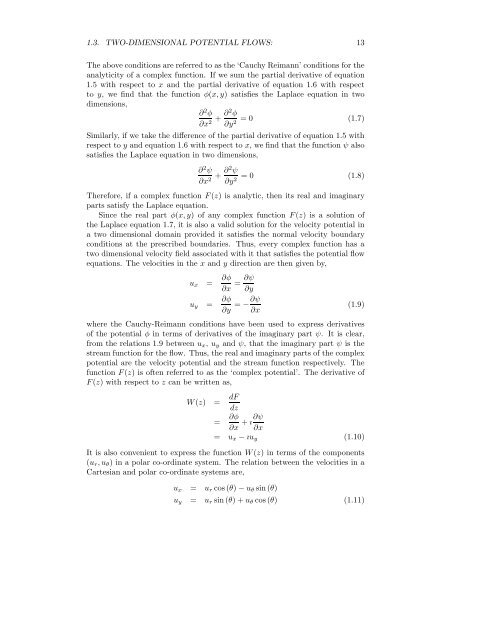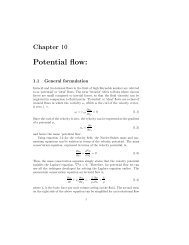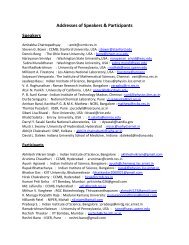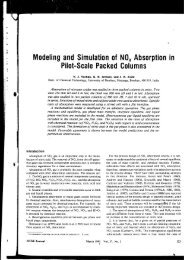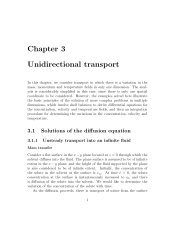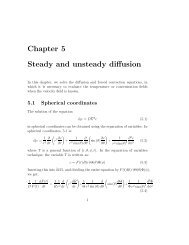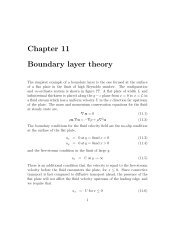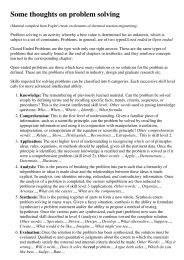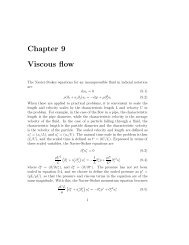Potential flow:
Potential flow:
Potential flow:
Create successful ePaper yourself
Turn your PDF publications into a flip-book with our unique Google optimized e-Paper software.
1.3. TWO-DIMENSIONAL POTENTIAL FLOWS: 13The above conditions are referred to as the ‘Cauchy Reimann’ conditions for theanalyticity of a complex function. If we sum the partial derivative of equation1.5 with respect to x and the partial derivative of equation 1.6 with respectto y, we find that the function φ(x, y) satisfies the Laplace equation in twodimensions,∂ 2 φ∂x 2 + ∂2 φ∂y 2 = 0 (1.7)Similarly, if we take the difference of the partial derivative of equation 1.5 withrespect to y and equation 1.6 with respect to x, we find that the function ψ alsosatisfies the Laplace equation in two dimensions,∂ 2 ψ∂x 2 + ∂2 ψ∂y 2 = 0 (1.8)Therefore, if a complex function F(z) is analytic, then its real and imaginaryparts satisfy the Laplace equation.Since the real part φ(x, y) of any complex function F(z) is a solution ofthe Laplace equation 1.7, it is also a valid solution for the velocity potential ina two dimensional domain provided it satisfies the normal velocity boundaryconditions at the prescribed boundaries. Thus, every complex function has atwo dimensional velocity field associated with it that satisfies the potential <strong>flow</strong>equations. The velocities in the x and y direction are then given by,u x = ∂φ∂x = ∂ψ∂yu y = ∂φ∂y = −∂ψ ∂x(1.9)where the Cauchy-Reimann conditions have been used to express derivativesof the potential φ in terms of derivatives of the imaginary part ψ. It is clear,from the relations 1.9 between u x , u y and ψ, that the imaginary part ψ is thestream function for the <strong>flow</strong>. Thus, the real and imaginary parts of the complexpotential are the velocity potential and the stream function respectively. Thefunction F(z) is often referred to as the ‘complex potential’. The derivative ofF(z) with respect to z can be written as,W(z) =dFdz= ∂φ∂x + ı∂ψ ∂x= u x − ıu y (1.10)It is also convenient to express the function W(z) in terms of the components(u r , u θ ) in a polar co-ordinate system. The relation between the velocities in aCartesian and polar co-ordinate systems are,u x= u r cos(θ) − u θ sin(θ)u y = u r sin (θ) + u θ cos(θ) (1.11)


